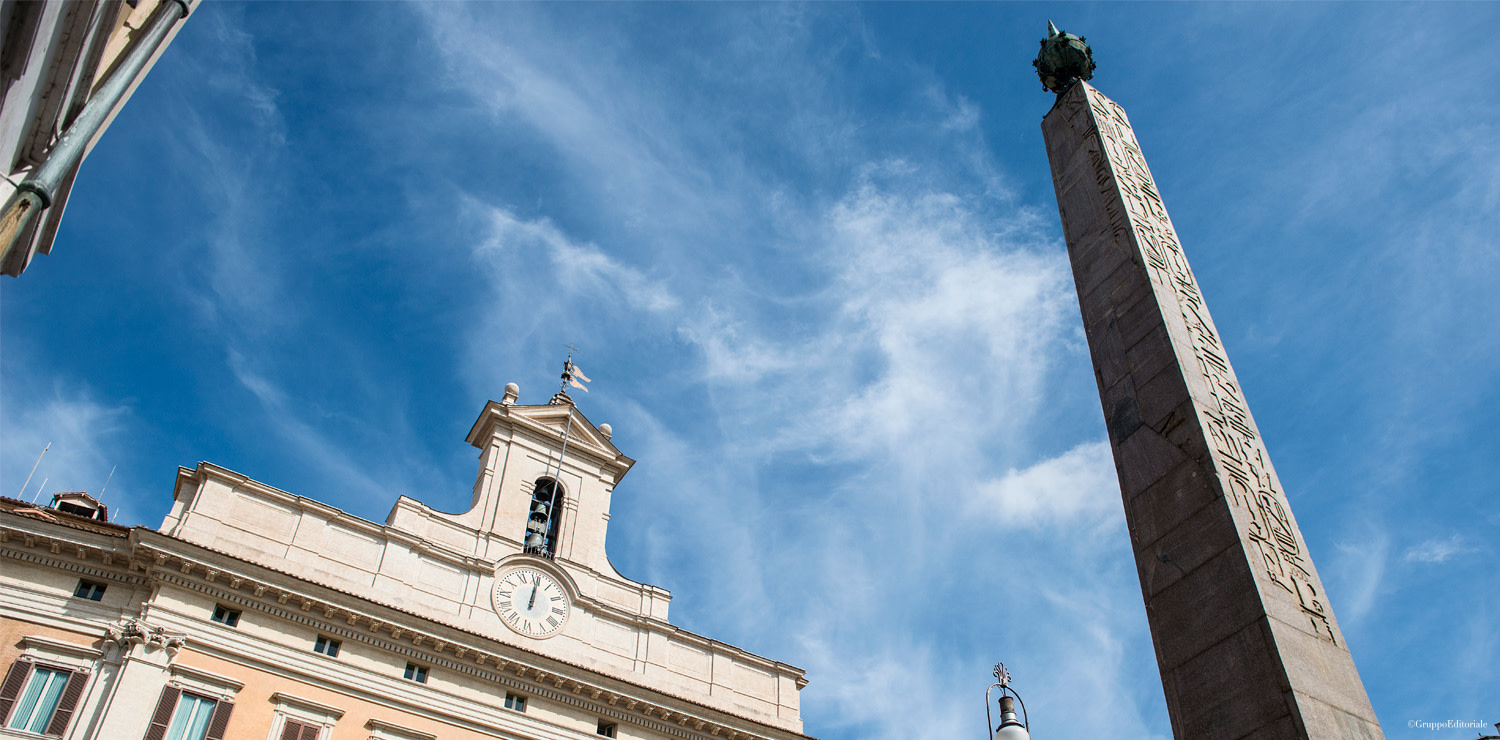Ephemeral and eternal Rome
The political power of Rome in an exclusive itinerary
Cicero standing, his arm stretched to indicate Catiline sitting on his bench, isolated from all the senators, listening with cap in hand to accusations of being a traitor. Those were the times when things were said as they were: no ‘scams’, but betrayals. I spent a long time in one of the rooms of the Senate in Palazzo Madama, a Roman seat of the Medici.
This rectangle in the heart of the city held the most important ‘sacred’ places of political power, all of which were former buildings owned by the Church. Going from the Senate towards the Pantheon, a narrow road suddenly opens onto the ancient temple in the Pigna district, where the ancient Romans revered the deities gathered in one place. As we go along via del Seminario, we flank Palazzo San Macuto, named after a Spanish saint. Even today the ultra-powerful and terrible aura of the past exudes: it was in San Macuto in fact, the Court of the Inquisition operated for centuries. In this building, there was a power that mutatis mutandisi resists even today: in fact, it is the seat of parliamentary commissions, mostly those of inquiry, where ministers, powerful entrepreneurs and soldiers are summoned to hear what offenses they have committed alone or in league with others. I was a member of a couple of these commissions, above which there is no one, and no one can limit their power, except for the Constitution.
It is the Rome of political, civil and social power. A little further on, there is Palazzo Montecitorio, which was once called Monte Citatorio, where the Church held a large part of its folders of secret documents and which became the seat of Parliament following the fall of the Papal States. It is one of the most famous Roman palaces: foreign and Italian tourists take selfies in front of his door and expect parliamentarians to pass by. While for the government, or rather for the Prime Minister, it is worth waiting in front of the door of Palazzo Chigi, adjacent to Parliament. And what about the Quirinale: the summer palace of popes, later home of the King and finally home to the Presidents of the Republic.
When I left Montecitorio for a breath of fresh air, I went up to the Capitoline Hill, centre of Roman history and political power, eternal as D’Annunzio would say: here I chatted with Marcus Aurelius on horseback, mindful of the diem perdidi of his predecessor Titus. Up there, face-to-face with the centuries-old Palazzo Senatorio, between the greenery and the west wind, it seemed to be a stone’s throw from the sky, this oldest town hall in the world.
Aside from the palazzi, a special game remains alive in Rome: knowing where the powerful dine, where we can meet them “by chance”. It is a sort of Monopoly with many boxes: the first has been there for many years, the unstoppable Fortunato al Pantheon, a multi-party environment where certain tables have always been assigned. It’s like being at home. The waiters advise and advise against. The Pantheon keeps an eye on you. Before too long, everyone goes there. Spadolini had his table almost at the entrance, Verdini by the window overlooking via del Pantheon. Another neutral spot is Il Bolognese in Piazza del Popolo: it was a favourite of Cossiga, Marra, D’Alema and tourists in search of celebrities. Tinto Brass has his coffee on the other side of the square in via del Babbuino, but has lunch at Dal Bolognese. High society is found there. Many Tuscans stop at Dal Toscano for roasted and boiled meats that often attracted Fellini. Di Maio and some of his fellow party members are happy to go to Bellacarne. But they also like going to Retrobottega, like Di Maio and Di Battista, while Renzi, although he often changes location, has a marked preference for Spirito in the beautiful piazza Di Pietra, among the remains of a thousand-year old Roman ruins, a stone’s throw from Parliament.
Salvini often goes to La Rosetta, a seafood restaurant between the Pantheon and Fortunato, also favoured by Verdini. My personal favourite was and remains Camponeschi in piazza Farnese, a stone’s throw from the residence of Cesare Previti and from the French embassy in the building of the same name. However, the small restaurants in the vicinity of Campo dei Fiori should not be overlooked in this culinary political game, frequented by ambassadors and bureaucrats and where large amounts of fried foods are consumed. A good number of parliamentarians go as far as Piperno in Piazzetta dei Cenci, the former ghetto area, vaunting Jewish-Roman cuisine, with excellent ‘giudia’ artichokes. It’s a broad space, popular among the political and cultural figures who no longer know which side they belong to, going from one side to the other according to the way the wind blows, splitting and saying they did it by sacrificing themselves for the country and giving side eye at the table adjacent, filled with those who have never changed their loyalties. This is the true eternity of Rome. Do you remember Gingillino by Giuseppe Giusti that we studied at school? Rome ‘where every river of good and evil is run and agitates and boils.’ Rome, ephemeral. Eternal Rome.









